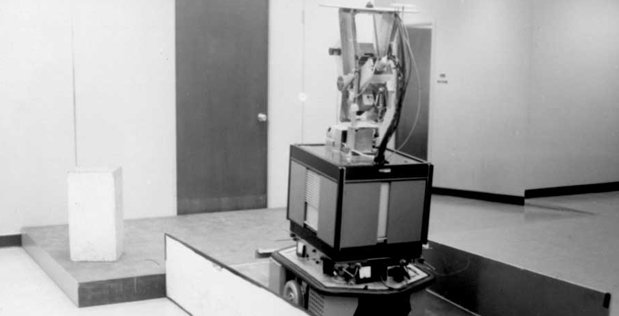Shakey, developed by the Stanford Research Institute (SRI) during the early 1970s, represented a monumental leap forward in the field of autonomous robotic navigation.

In the realm where technology and imagination converge, few landmarks have had a more profound impact than Shakey the Robot. As the first robot to navigate using artificial intelligence (AI), Shakey’s story embodies the relentless pursuit of merging human ingenuity with machine capabilities.
Shakey, developed by the Stanford Research Institute (SRI) during the early 1970s, represented a monumental leap forward in the field of autonomous robotic navigation. Named in honor of Alan Shakey Kaplan, a dedicated researcher at SRI who played a pivotal role in the project, Shakey became a trailblazing milestone in demonstrating the potential of AI-infused robots to comprehend and act upon their surroundings.
The foundation of Shakey’s ingenuity lay in its ability to reason about its own actions. This autonomy marked a dramatic departure from earlier robotic systems that required step-by-step instructions for each element of a task. Shakey could dissect and interpret commands independently, allowing it to perform tasks by intelligently breaking them into elemental actions. This capacity to process high-level instructions was a precursor to the adaptable and intelligent behavior exhibited by contemporary robots.
Shakey’s sensor array was a marvel in itself, comprised of a laser range finder, a television camera, and a touch sensor. These sensory tools endowed Shakey with the capacity to perceive its environment and make informed decisions about navigation. The inclusion of various actuators, such as wheels, a gripper, and a head, further empowered Shakey to maneuver, interact, and execute tasks with physical dexterity.
Operating on the innovative programming language LISP, Shakey was the first robot to exhibit a tangible link between AI and robotics. It wasn’t just limited to mere simulation; Shakey’s AI was capable of grappling with real-world challenges and complexities. However, it’s important to note that while Shakey could navigate a simulated environment effectively, its abilities were constrained when it came to the complexities of the tangible world.
Standing at an impressive 6 feet tall and weighing 250 pounds, Shakey was powered by a diesel generator, exemplifying the technological advancements required to sustain its operations. However, despite its pioneering capabilities, Shakey was retired in 1973 as further research and development in the realm of robotics and AI continued to evolve.
Shakey the Robot’s legacy resonates through the corridors of technological history. It paved the way for the development of intricate robotic systems that now find applications in diverse industries ranging from manufacturing to healthcare and entertainment. The strides made by Shakey served as the building blocks for the autonomous robots we encounter in the present day, capable of dynamic decision-making and engagement with their surroundings.
In conclusion, Shakey the Robot’s fusion of AI and robotics has left an indelible mark on the trajectory of technological progress. As we chart the course of AI-driven robotics, we owe a debt of gratitude to the innovative spirit that birthed Shakey and its foundational contributions to autonomous navigation and intelligent action.